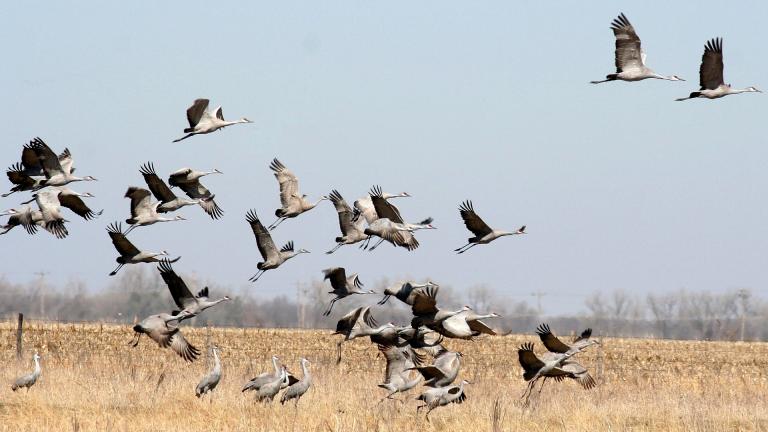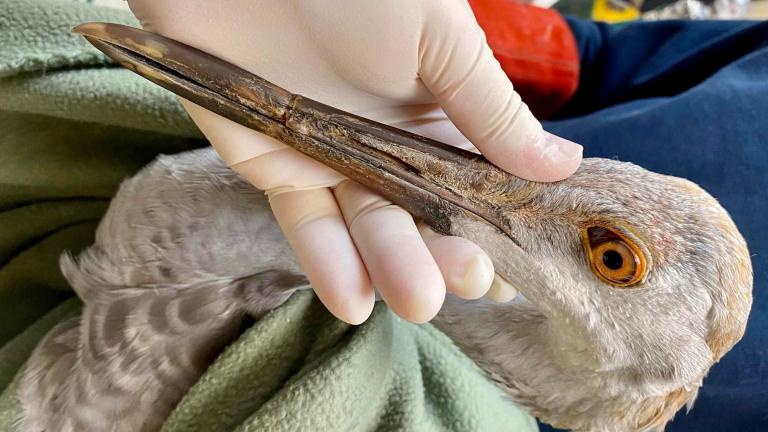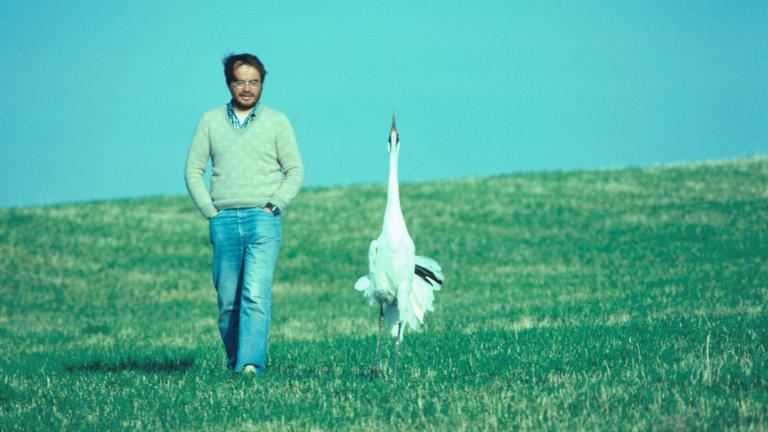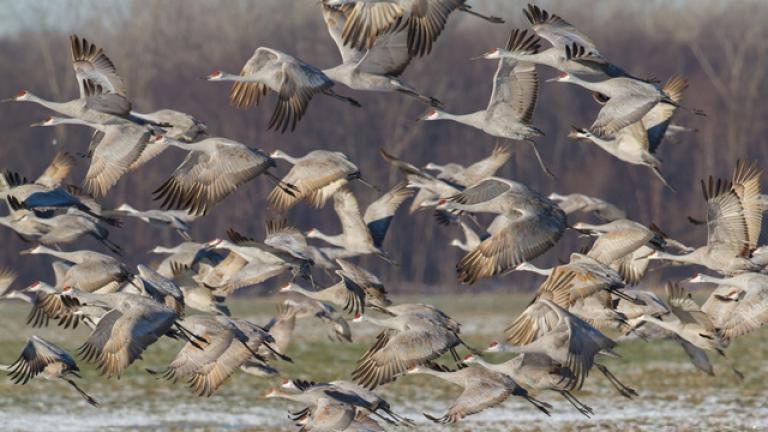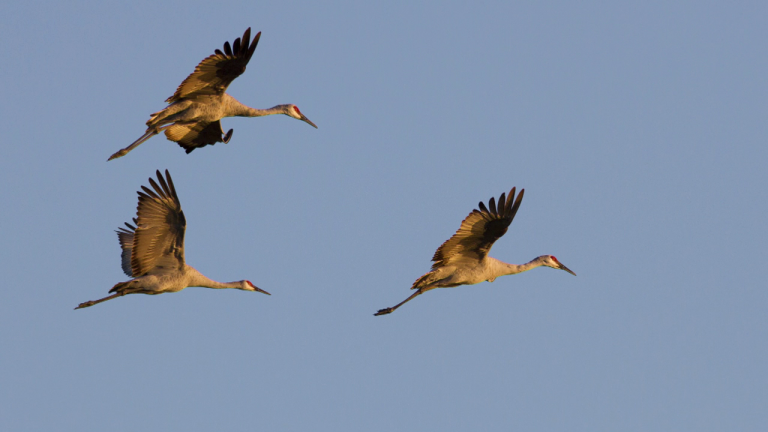Sandhill crane migration is reaching its peak. For those who've wondered whether there are more of the birds this year than in the past, the answer appears to be yes.
Sandhill Cranes
The U.S. needs a national strategy to deal with its plastic waste problem, which the country produces at a greater rate than the entire European Union combined, according to a new report. Interventions can’t come soon enough for wildlife.
The region’s nature lovers eagerly anticipate the annual flyover of the large, raucous birds but for regular observers of the cranes, this year’s migration was cause for anxiety due to low numbers counted at their regular Indiana rest stop.
More than 25,000 migrating sandhill cranes are making a pit stop at Indiana’s Jasper-Pulaski Fish and Wildlife Area. The bird’s numbers have rebounded thanks to wetland conservation efforts, but now climate change threatens to undo that progress.
Conservationist George Archibald has spent his life working to bring cranes back from the brink of extinction. He joins “Chicago Tonight” to talk about his groundbreaking work which has been recognized around the world.
Jay Shefsky takes a road trip to see 15,000 Sandhill Cranes in Indiana. Jay and his Field Museum guide, Josh Engel, get a surprise along the way.
Every year at this time, Sandhill Cranes migrate south. But this year, the skies over Chicago seem to be full of them. Field Museum ornithologist Josh Engel explains why.

